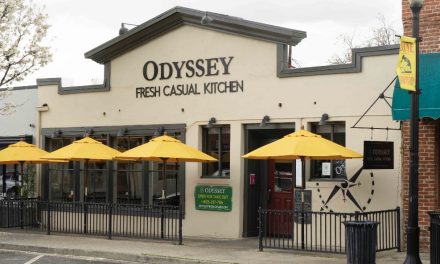A plan is under development to reopen SLO County’s economy. The details of its progress were surfaced in REACH’s Townhall webinar earlier today.
“This plan is being developed with large cross-sector engagement and under an aggressive timeline,” REACH CEO Melissa James said. “We are all working to have a final working draft within the week.”
The Roadmap to Reopening is being developed by a panel of medical experts overseen by a panel of elected officials including two county supervisors, Bruce Gibson and Lynn Compton, and two mayors, Heather Moreno and Caren Ray Russom.
REACH and SLO County are partnering to lead the project and will be working to gather and incorporate input from 250 business and community leaders from across the Central Coast.
Below are highlights shared by today’s Townhall speakers.
List of essential businesses expands
SLO County will be adding several activities to what’s allowed under current guidelines at this afternoon’s press briefing, SLO CAO Wade Horton said. Among those:
- All construction, including the issuing of building permits
- Elective surgeries, once the hospitals are ready
- Animal grooming, both in-house and mobile
- Recreational fishing, including curbside retail fishing supplies
“We are doing everything we can do to open up safely as fast as possible,” Horton said.
Elected officials petition state to allow reopening
A bipartisan committee of local officials is asking the governor for permission to start a phased re-opening of SLO County’s economy as soon as the county roadmap is ready, Assemblyman Jordan Cunningham announced.
A letter signed by Cunningham, Supervisors John Peshong and Debbie Arnold and mayors of all seven SLO County cities is being sent to Gov. Newsom’s office today. “We are ready to begin phased reopening based on science and expert guidance,” the letter states.
Insight into what’s guiding the plan
Dr. Aydin Nazmi, an epidemiologist and chair of the medical panel crafting the guidelines for reopening, shared the major variables and unique local factors the plan considers.
“Though we’re starting from low risk, nonetheless we’re at elevated risk compared to many other places,” Nazmi said.
That’s because of SLO County’s location on a popular state through-fare, which could attract people coming to visit or even just passing through, as well as several large college campuses that bring thousands of students to town. Pandemics often have multiple waves, he noted, and “the second wave could be even larger given our unique risk profile.”
The draft plan lays out a phased reopening based on benchmarks in three areas:
- epidemiology, or the spread of the disease
- healthcare factors including personnel, stock of personal protective equipment and capacity to handle a surge
- public health factors including the ability to test anyone with symptoms and conduct contact tracing on cases.
The plan also addresses triggers that would dictate a re-tightening of restrictions.
The view from small business
Nick Tompkins, owner of NKT Commercial and a REACH founder, shared that the challenges our communities and businesses are facing are far greater than any other recession in his lifetime. His tenants include many small local businesses as well as some national chains in the food, restaurant, hospitality and retail industries.
The lack of forward visibility of timing on when it will be safe for the consumer to return with some semblance of normalcy is among the greatest issues to navigate right now as small local businesses have the limited cash buffers, Tompkins noted.
He expressed appreciation for reopening quickly with a phased but cautious approach guided by the medical data, and emphasized that there are several thorny issues to navigate ahead and working together in a unified approach is going to be critical.
What we’re reading and listening to:
- Our Pandemic Summer: The fight against the coronavirus won’t be over when the U.S. reopens. Here’s how the nation must prepare itself.
- Making Sense: A conversation with Paul Bloom.
















